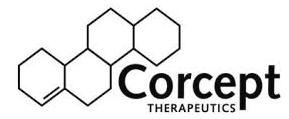Non-Functioning Tumors (Endocrine-Inactive Tumors)
As their name indicates, these relatively common pituitary adenomas do not result in excess hormone production. Instead they typically cause symptoms because of increasing size and pressure effect on the normal pituitary gland and on structures near the pituitary such as the optic nerves and chiasm. The major symptoms of patients with endocrine-inactive tumors are those of pituitary failure (hypopituitarism), visual loss and headache. Hypopituitarism may manifest itself as nausea, vomiting, weakness, decreased mental function, loss of sexual drive, infertility and in women, irregular or absent periods (amenorrhea). The vast majority of these tumors are benign. Most are macroadenomas (over 1 cm in size) when finally diagnosed. Occasionally, they grow quite large and into the cavernous sinus causing nerve compression and double vision. Some patients with large tumors may have acute hemorrhage into the tumor (pituitary apoplexy) causing relatively sudden onset of headache, visual loss, double vision, and/or pituitary failure. Endocrine-inactive adenomas may also be discovered incidentally during an evaluation for another problem, such as a head injury. Almost half of endocrine-inactive adenomas secrete part of a hormone called the alpha-subunit, which is not hormonally active but can be measured in the blood.
Symptoms of hypopituitarism may include:
- Nausea and vomiting
- Loss of appetite
- Weight loss
- Fatigue, decreased energy
- Decreased mental function
- Dizziness
- Joint pains
- Women: infertility, irregular or nonexistent menses
- Men: infertility, impotence in men, loss of body and facial hair
- Loss of sexual drive
Symptoms of pressure or “mass” effect
- Headache
- Loss of vision – loss of peripheral vision or decreased acuity in one or both eyes
- Double vision
DIAGNOSIS
Hormonal Evaluation
In patients with symptoms suggestive of pituitary failure (hypopituitarism), a complete endocrinological evaluation should be performed. These blood tests should include:
- TSH (Thyroid Stimulating Hormone), Free Thyroxine
- A.m. cortisol and ACTH (Adrenocorticotropic hormone)
- LH (Luteinizing Hormone), FSH (Follicle Stimulating Hormone)
- Estradiol (in women) or testosterone (in men)
- Prolactin
- GH (Growth Hormone)
- IGF-1 (Insulin-like growth factor 1). This is also called somatomedin-C.
Based on the results of these tests, additional hormonal studies may be ordered.
Ophthalmological evaluation:
For patients with visual complaints, an ophthalmologist (preferably a neuro-ophthalmologist should evaluate the patient. This evaluation should include acuity testing of each eye and formal visual field testing to determine if there is loss of peripheral vision.
Imaging:
An MRI of the pituitary without and with gadolinium (contrast agent) is the preferred study for visualizing a pituitary tumor. In most instances, a CT scan without and with contrast will also detect an adenoma. In a minority of cases instances it may be difficult to distinguish an adenoma of the pituitary from other masses. These masses include:
- Craniopharyngioma
- Meningioma
- Arachnoid Cyst
- Granulomatous diseases (lymphocytic hypophysitis)
- Glioma of the suprasellar region
- Metastatic tumor
- Chordoma
TREATMENT
Surgery:
For the great majority of patients with symptomatic endocrine-inactive adenomas, transsphenoidal surgery and adenoma removal is the preferred and most effective therapy. The long-term cure or control rate is approximately 70-80% overall. The cure rate is generally higher for smaller tumors and those that do not invade the cavernous sinus; conversely, the cure rate is lower for larger tumors (over 3 cm) and those that do invade the cavernous sinus. Overall, transsphenoidal tumor resection results in an improvement in visual acuity and visual field deficits in 75-90% of patients, headache resolution in 80-90% of patients, and improvement in hypopituitarism in only 10-30% of patients. Patients who do not have hormonal recovery after surgery will require long-term hormone replacement therapy. Because the transsphenoidal approach is so effective and relatively safe, it is rare that even large macroadenomas warrant a transcranial operation as the initial procedure.
Medical Therapy:
There is no known effective medical therapy that reliably slows or stops growth of endocrine inactive adenomas.
Radio-therapy:
Radiation is generally used as a second line therapy for endocrine-inactive tumors. For patients who have residual tumor after the initial surgery, radiation or repeat transsphenoidal surgery or both are generally indicated if the tumor grows as seen on subsequent MRIs. Both conventional (external beam) and stereotactic radiosurgery are relatively effective in controlling growth, but stereotactic radiation can deliver a higher radiation dose to the tumor more safely. Consequently it is the preferred radiation technique. Also, external beam radiation reliably causes loss of remaining normal pituitary function over 5 to 10 years. Stereotactic radiosurgery may also cause loss of pituitary function, but less frequently then external beam radiation.






